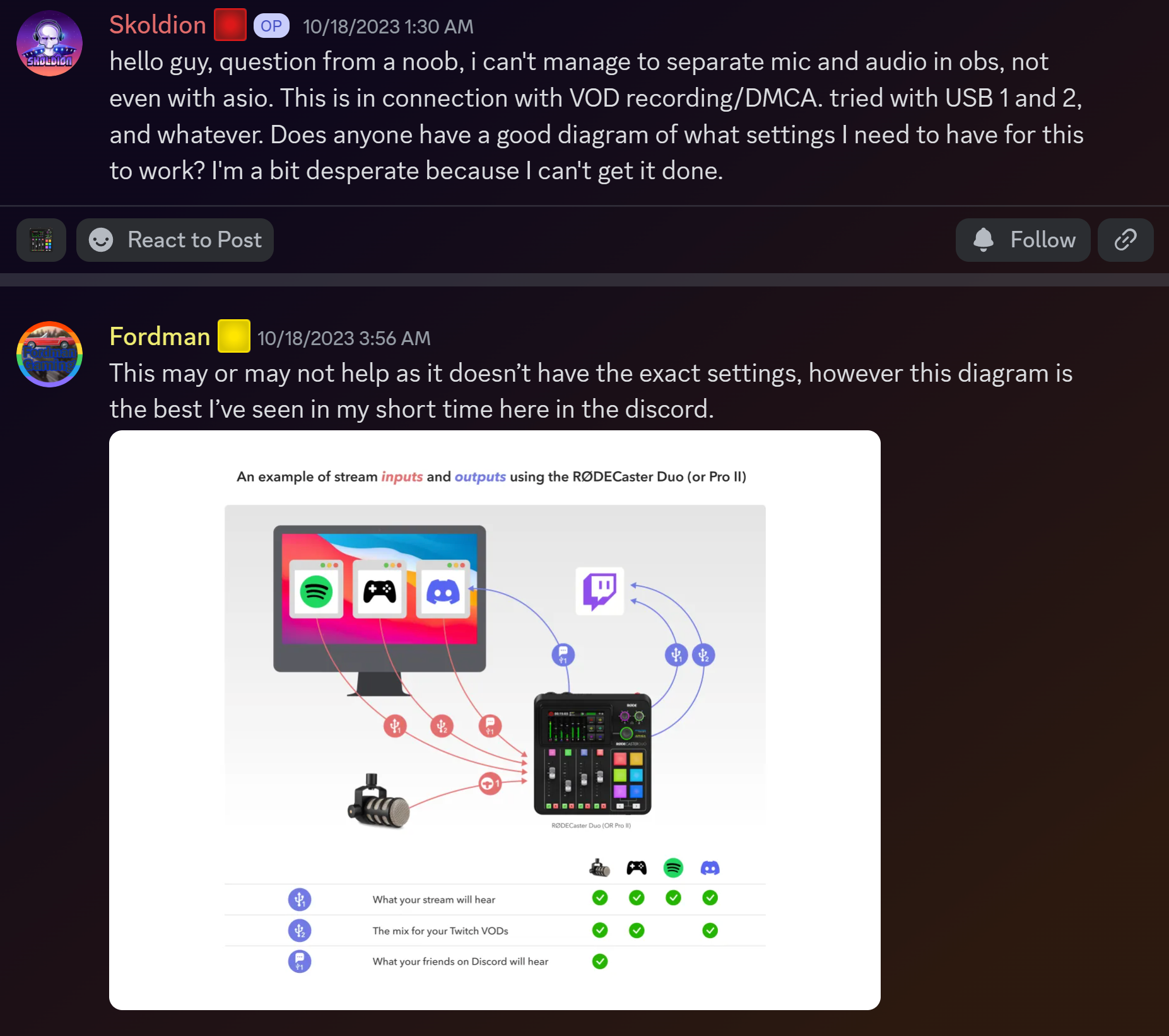Online, the best images go viral because they speak to a shared experience or feeling people already had, just in a new, instantly relatable way.
It’s the same with community information. The most valuable content isn’t just factually correct, it needs to resonate with how users actually think and speak about their problems. Force-feeding them info will get you ignored.
So how should brands communicate with their communities? Just listen to your users – they’ll tell you!
I made a viral diagram
We had that question, i.e. one question, asked a million different ways. It was about livestream audio routing - tricky stuff to explain in words, especially for new users or those with language barriers.
It was having an impact on the product’s perception. Since the answer to the question was complicated, users and potential buyers thought that the RØDECaster had less functionality than it actually does.
To respond, I made a diagram. Simple, focused, visually clear. Turns out, it wasn’t just helpful for our server, people started sharing it everywhere, to explain what they wanted, or to help others out.
.png) I have never seen this much love for… A diagram.
I have never seen this much love for… A diagram.
.jpg) Just remember: this will all be on the quiz at the end. 👀
Just remember: this will all be on the quiz at the end. 👀
 Behold! A tweet.
Behold! A tweet.
 Everyone loves my diagram.
Everyone loves my diagram.
Some brands worry if community members give out bad advice, that will harm our reputation! It’s a valid concern, since even professionals mess up sometimes.
The positive spin
Brands need to treat misinformation or bad advice in their communities the same way as negative feedback – as an opportunity to do better. By providing clear, responsive, and engaging resources, you do two things:
Empower your helpers Give your most dedicated community members the tools to give accurate and helpful answers with confidence.
Course correct with clarity When bad info does pop up, you can step in with official, user-friendly guidance that sets the record straight.
What did we learn from making this all work?
🏠 What I Learned Building the RØDE Community
Community structure:
💜 Community Strategy (Respect helpers, give them tools)
Community content strategy:
🎓 Community Content Strategy (Learn from audience misconceptions)
Using community data:
😎 Using Community Knowledge (Yep, another guy making chatbots)
Creating custom solutions:
🗺️ Creating a Meaningful Community UX (with Discord)
Service design:
🪄 Service Design (Brands compete on user experiences)
Proving it:
📈 Proving It (Result- chart line go up!)
Misc.
🌐 Why Discord? ❔ Further questions for discussion 📜 Footnotes 👋 Meet the team- one other guy
